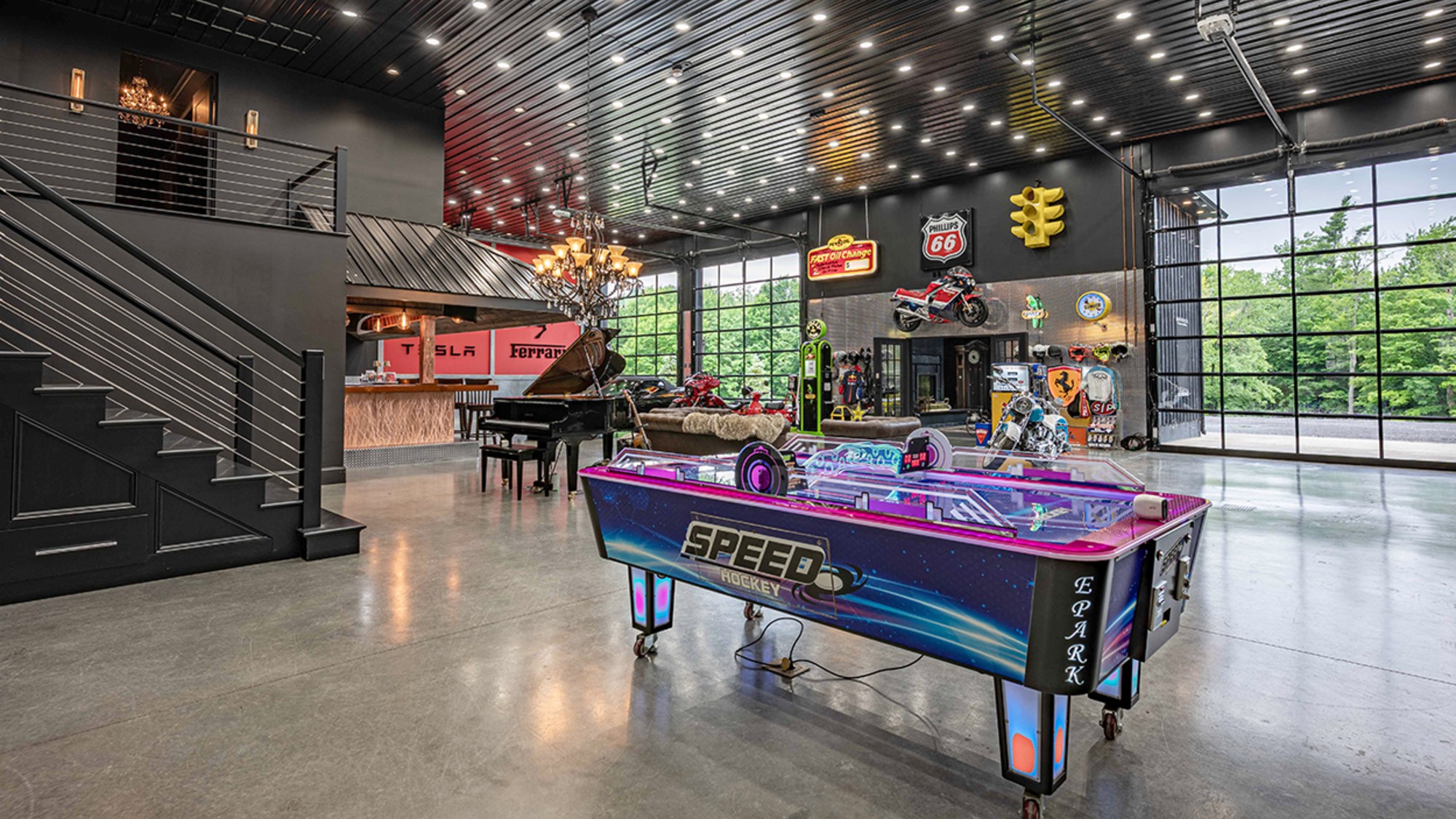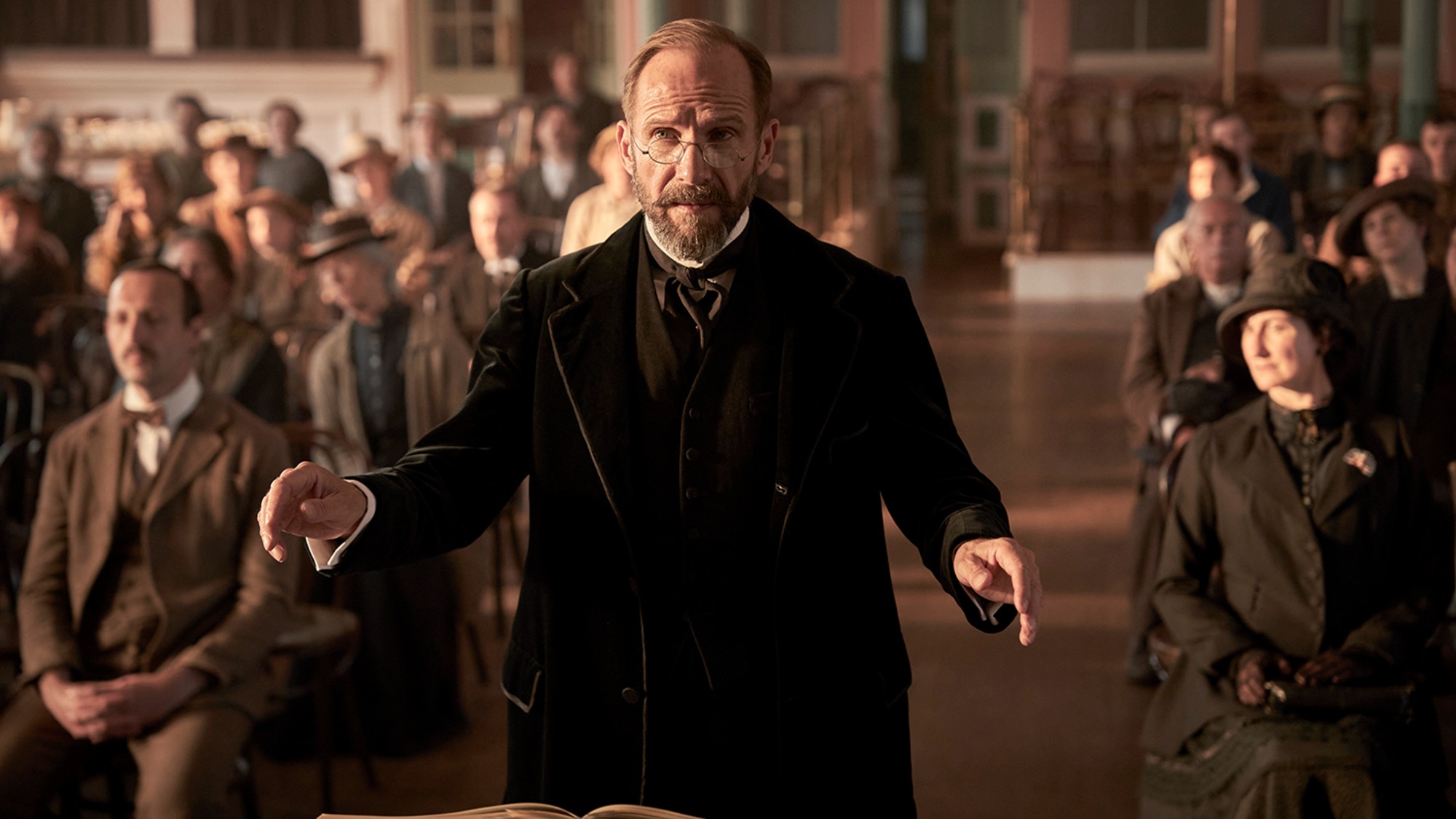When a fatal car crash shatters too many lives
A terrible accident. A tragic death. And the search for blame.


John Farrace pulls his car off the highway and onto the shoulder, stopping just a few feet away from a roadside memorial. He pauses for a second before opening the car door and stepping out into the cold. The winter forest is void of signs of life, except for a few trinkets on the ground — a purple stuffed animal, a high school wrestling t-shirt, and a few other goodies — left in memory of Anthony Farrace. Pictures of the handsome young man, with broad shoulders, white-blonde hair, and a million-dollar smile, decorate a tree. Next to it, American and Marine Corps flags fly on a 10-foot flagpole, installed by a person unknown to John, and bunches of fake white poinsettias have been shoved into the mulch surrounding its base. A t-shirt tied around the trunk has been there so long that fungus has begun to grow around the fabric.
Cars whiz by on the ruler-straight road cutting through the New Jersey Pine Barrens. The highway is so narrow and they fly by fast, but John doesn't flinch. He's focused on the pictures of his son. Like Anthony, his shoulders and neck are muscled, and when he talks his hands command space and his voice demands attention.
Though John and his family have mourned for six years, he says he does not feel "grief." He thinks of Anthony throughout the day, every day, and yet, "grief" doesn't describe what he's experiencing. He thinks the word represents a weakness, at odds with how he sees himself: an ex-Marine, the head of his household.
The Week
Escape your echo chamber. Get the facts behind the news, plus analysis from multiple perspectives.

Sign up for The Week's Free Newsletters
From our morning news briefing to a weekly Good News Newsletter, get the best of The Week delivered directly to your inbox.
From our morning news briefing to a weekly Good News Newsletter, get the best of The Week delivered directly to your inbox.
(More from The Big Roundtable: Miracle on Molokai)
A few feet away from the flagpole stands a tree where, on July 6, 2007, a Mercedes Benz crashed, killing his son. Where the passenger's side hit, chunks of bark are torn off, and on the ground next to the tree are five-year-old piles of windshield glass. Five years after the accident, the Farraces were still reeling from their son's death. As John sees it, his family was "given a life sentence by the hand of the criminal who should be in prison." Across town live the McLaughlins, whose daughter, Danielle, dated Anthony and was driving the car when it hit the tree. They believe they've suffered enough, and they want to know when life can go on.
For a car crash six years past, the roadside memorial in honor of Anthony is remarkably well tended. The base of the flagpole is mulched, and, periodically, one of the Farraces, friends of the family, or even strangers drop off flowers or clean up the site. Six years after the accident that divided these formerly friendly families, John stands at the site of his son's death and looks at the shattered glass.
Anthony's life
A free daily email with the biggest news stories of the day – and the best features from TheWeek.com
When John and Claudia Farrace were first married, they lived in a brownstone in north Philadelphia, in the neighborhood where John grew up and thought he would never leave. But in 1990, when they had their first child, Anthony, the couple moved to a suburb named Marlton, a town of cul-de-sacs nestled among a tangle of highways in Southern New Jersey — a 30-minute drive from Philadelphia, though worlds apart. Not far away from the big roads that connect suburban New Jersey to the rest of the country hide communities where neighbors know each other and kids can play safely in the street. When Anthony was three, the couple's second child, Diana, was born. Here in Marlton, where each ranch-style house has a front lawn and a two-car garage, the Farrace children grew up.
From a young age, Anthony dreamed of attending the Naval Academy and becoming a Marine. In middle school, he was bullied, his father remembers. Anthony wasn't a follower who bent to peer pressure, John says with pride. He cared about schoolwork and didn't make fun of girls. He stayed up past his father's bedtime, hunched over his desk studying. During study hall, while his classmates chattered, Anthony hunkered down and worked. He was on the honor roll and in the Spanish club and a leader on his sports teams.
By high school Anthony, who wrestled, played football, swam, and lifted weights, had the build of a major league slugger. In one Facebook picture, he stands in front of an American flag, his big arms folded across a puffed-out chest, his chin tipped upward with insistent youthful swagger. A solemn look is painted on his young face and his crew-cut, natural white-blond hair is spiked in front, like a 90s boy band singer. When John talks about his son, his face is full of pain and he rarely smiles. But he breaks once, smiling when he remembers that Anthony wasn't a naturally talented athlete: he was just tireless.
At 17, Anthony could have passed for 20-something, but he was still very much a kid. He shifted from foot to foot when he spoke, recalls Lauren Gage, a high school friend, and he dreamed big, like a kid who believes he can change the world. In one video of Anthony, recorded at a Cherokee High School wrestling match, he stands under the gym's fluorescent lights in his usual stance: arms folded, Marine posture. As he talks about his commitment to the team and to becoming a better wrestler, his voice cracks, betraying his age. Still, his voice sounds like he was always smiling, and his boyish grin lit up even photographs. He was crush-worthy.
In freshman year at Cherokee High, Anthony developed feelings for a friend, Rachel Emig. For a couple of years they went through the motions of high school courtship; they flirted, but nothing really happened. At the beginning of junior year, he finally asked her out. Their relationship — Anthony's first — ended after just two months. They were similarly driven and competitive in both school and sports. The relationship was fiery and, Rachel thought, too serious for such a young age. "For a long time I felt a lot of guilt," Rachel said. "because I knew he felt a different way about me than I did about him." She thought they were better as friends, and eventually he agreed, though "I always felt guilt for not being what he wanted me to be," she says.
(More from The Big Roundtable: My weekend at Adolf's)
As romance often goes, within a few months, Anthony fell for another girl, a social butterfly, a pretty brunette with big brown eyes and a goofy sense of humor. Her name was Danielle McLaughlin.
Danielle lived down the street from Rachel, and the two had been friends since childhood. When Danielle asked for her friend's blessing to date Anthony, she got the green light, and in March 2007, they became a couple.
Danielle was silly and outgoing, and when Anthony was around her, he was too. "She brought that out in him," Rachel says. Around her, his anxieties about sports and school seemed to melt away. They walked together through the hallways of Cherokee High and acted "lovey-dovey." In an age of ill-mannered teenagers, Anthony was chivalrous. When he wanted to date a girl, he asked her father for permission, and, even though they were dating, he asked Danielle's father each time he took her out. Because Anthony didn't have much money for dates, Danielle's father offered to pay Anthony for help on construction projects around the house. He was a natural fit in their family, and they loved him. Danielle told Rachel that they planned on staying a couple in college, but that wouldn't happen. She and Anthony were together only four months before he died.
Marcy Court
Down the front hall and toward the back of the Farraces' suburban house, just above the entrance to the kitchen, is a plaque that reads, "Home is where your story begins."
They've lived on Marcy Court for nearly a decade, but Claudia still calls it a fixer-upper waiting to be fixed up. In the dining room, a poster from Anthony's leadership camp — on which a fellow camper wrote, "I love how [you're] not the typical football player!" — sits on the table that the Farraces never use. Next to it, atop a dark wooden bureau, pictures of Anthony surround John's humidor. Sometimes, when he visits the cemetery, John takes two cigars — one for himself, one for Anthony. The living room is dark, the furniture looks untouched, and the room's entrance is guarded by pet gate to keep out the family dog.
The Farraces spend most of their time in the back of the house, in a cozy carpeted family room with sliding glass doors that look out over the back yard and into a forest. A TV stand adorned with two football helmets — one from Navy and one from Cherokee High — is nestled in a corner.
They hoard like treasure chests boxes of documents about the crash. They have police reports, witness statements, Anthony's post-mortem toxicology report, letters to politicians pleading to help reopen the case, and photographs from the scene of the accident. These documents are proof that their son lived, and tell the story about how he died.
Claudia leafs through a pile of photos, pausing to study one in which the Mercedes Benz is wrapped around the tree. She doesn't cry. "I don't think I ever saw these," she tells John.
"I didn't want you to see them at the time," he replies.
"Sometimes it's worse thinking about what happened than seeing a picture," she says, then gets up slowly, putting her hand on the coffee table for support, leaving John in the room with the documents strewn about him. It was Claudia who had requested copies of the pictures from police, but when the images arrived in the mail, John had looked through them, examined each one, deciding it was best not to show his wife.
The car in the picture is a 1997 Mercedes with squared-off edges. Its right side wraps more than halfway around the tree trunk, bent as though it were made of aluminum foil. Where once there was a front passenger's seat, there stands a tree. The seat and the young man who had buckled into it just an hour before had been thrust back behind the driver when the car crashed. The vehicle looks as though it might have been a convertible; it wasn't. Emergency workers had to shear off the roof with the Jaws of Life, so they could pry Anthony's body from the car. The windshield is destroyed and metal scraps lie on the hood. In the photo that Claudia had never seen, state troopers stand at the accident scene, on New Jersey State Route 70, which runs through the heart of the state's Pine Barrens, 13.5 miles from Anthony's home on Marcy Court.
The coffee table and John's lap are littered with police reports, testimonies, and pictures he knows so well that when he talks about the crash, he quotes them from memory.
The Accident
It rained most of the day July 4, 2007, and when Anthony headed home from Danielle's to meet his midnight curfew, the roads were slick. His Honda hydroplaned, slid off the road and got stuck on the shoulder. John drove out to wait for the tow truck with his son. Everything appeared to be intact, but, just to be sure, John sent the car off to the mechanic the next day.
That put a bit of a wrench in Anthony's and Danielle's plans to spend the night at her aunt's house in Tom's River, about an hour's drive from home. Because Anthony's car wasn't out of the shop in time, she drove. She picked him up in her charcoal-colored Mercedes on July 5 in the evening. His parents and sister came out of the house and hugged him goodbye. They expected to see him in the morning, after weightlifting practice.
On the morning of July 6, there was a thick, but steady, stream of traffic on Route 70. After making a pit stop at a Wawa gas station, Diane Rinaldi, a Philadelphia woman, who was driving home from Tom's River with her mother and brother, pulled her car back onto the two-lane highway and headed westbound into traffic. It was just before 9 a.m. when a dark Mercedes pulled close to Rinaldi's car and began riding her bumper. The car moved to pass and pulled into the lane for oncoming traffic, pausing beside Rinaldi's car for a split second, long enough for her to look over and see the passenger: a fair-skinned young man with bright blond hair, wearing sunglasses, his window rolled halfway down. Rinaldi yelled at the car, What are you doing? And then the Mercedes sped up and pulled in front of her car.
Slow down, her mother cautioned from the passenger's seat.
A few minutes after 9 a.m., Danielle was stuck behind a car carrier and made a move to pass, pulling into the lane for oncoming traffic. Too late she saw a truck headed for her and another vehicle in front of the car carrier. She veered right, back toward her lane, but went too far and drove onto the shoulder of the road. She overcorrected and the Mercedes jerked left. Then she lost control.
The car traveled in an arc across the road, across the solid double yellow lines, crashing into a tree the size of a light pole. Upon impact, Anthony, who was buckled into the passenger's seat, was thrust back behind Danielle's seat.
At 9:09 a.m. a call for help in a single-car crash on Route 70 at milepost 23.5 went out over dispatch. The trooper who arrived first on the scene found both kids buckled in. Danielle was fully conscious. Anthony still had a pulse and was breathing, but he was unresponsive. The officer called in a Fatal Accident Unit, a Crime Scene Investigation Unit, and a medical helicopter.
Within minutes, Anthony died.
READ THE REST OF THIS STORY AT THE BIG ROUNDTABLE.
This story originally appeared at The Big Roundtable. Writers at The Big Roundtable depend on your generosity. All donations, minus a 10 percent commission to The Big Roundtable and PayPal's nominal fee, go to the author. Please donate.


